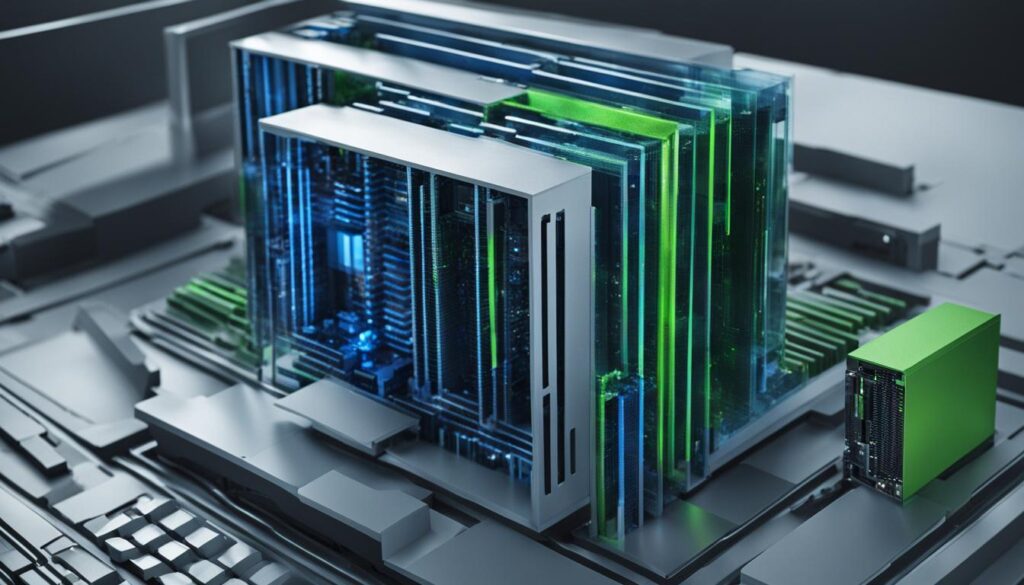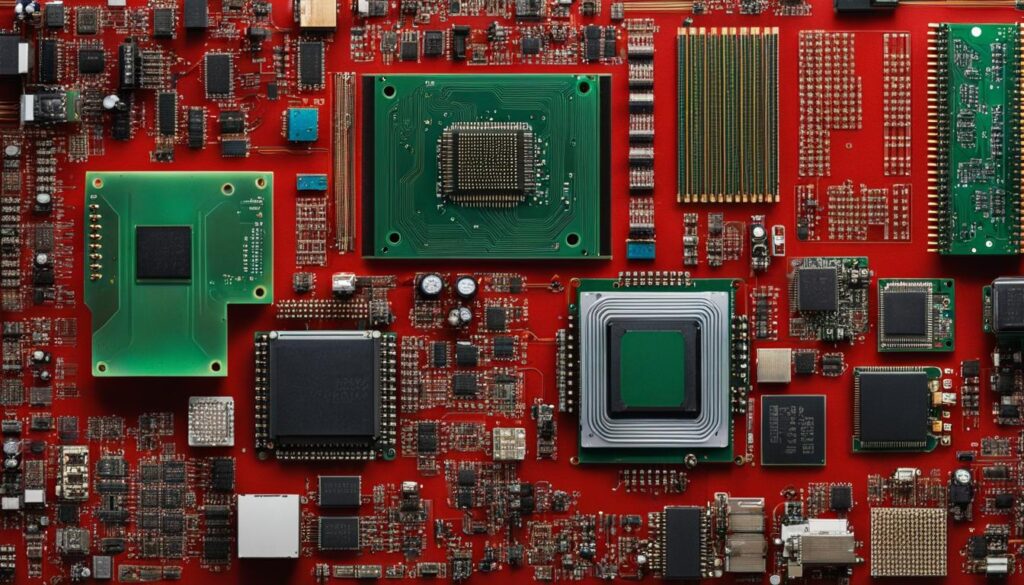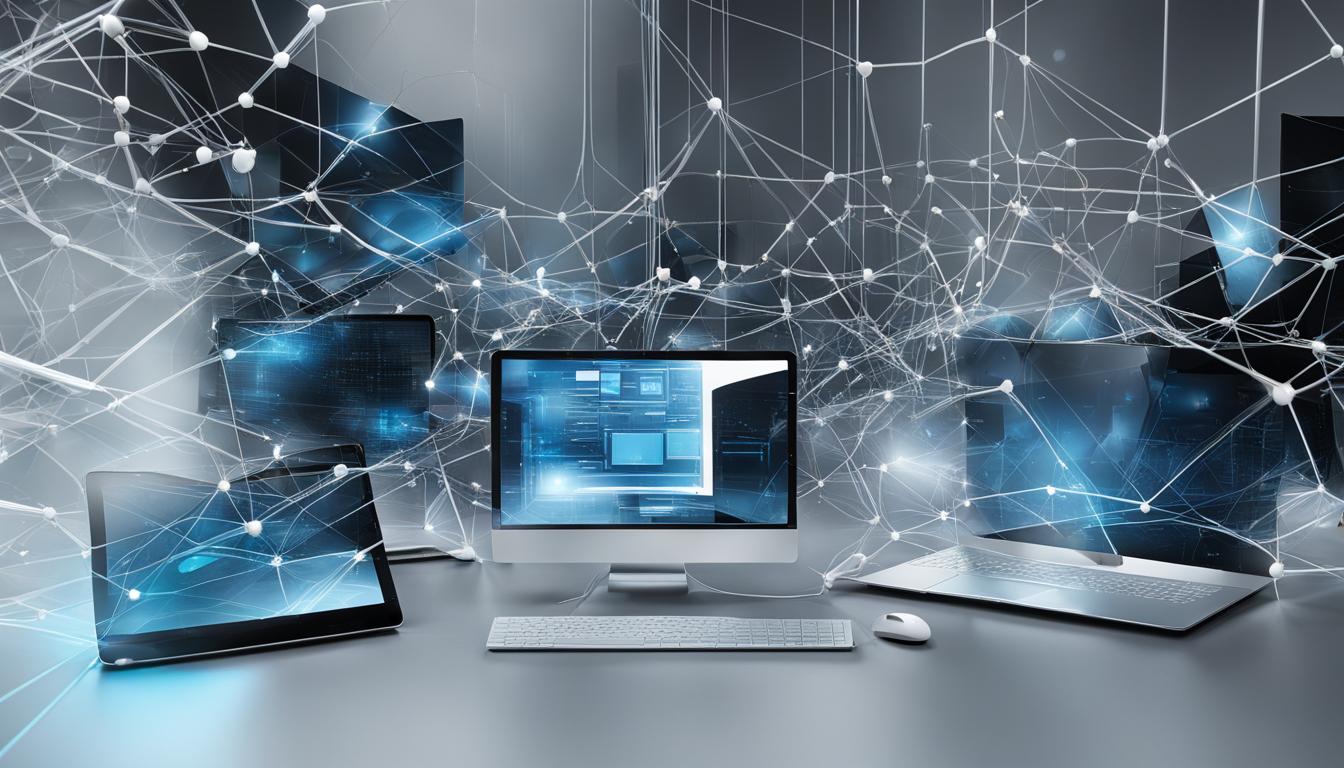In today’s digital world, electronic information technology (IT) is at the forefront of modern computing. But what exactly does it mean? Let’s dive into the definition and overview of electronic IT to get a clearer understanding.
Electronic and information technology, often referred to as electronic IT, encompasses a wide range of computer hardware and software, operating systems, web-based information and applications, telecommunications products, video equipment, multimedia products, information kiosks, and office products. In simpler terms, it includes the tools and systems that enable the creation, processing, and exchange of electronic data.
According to the Architectural and Transportation Barriers Compliance Board, electronic IT includes any equipment or interconnected system used in the creation, conversion, or duplication of data. This definition covers various technologies, such as telecommunications products, information kiosks, websites, multimedia, and office equipment.
It’s important to note that electronic IT specifically focuses on equipment and systems where information technology is the primary function. Other equipment, such as HVAC systems or medical equipment, where information technology is not the core function, are not included in this category.
Contents
- 1 What is Information Technology?
- 2 ICT vs. IT
- 3 Components of ICT
- 4 Conclusion
- 5 FAQ
- 5.1 What is electronic information technology?
- 5.2 How is electronic information technology different from information technology (IT)?
- 5.3 What is the difference between ICT and IT?
- 5.4 What are the components of ICT?
- 5.5 Why is understanding electronic information technology important?
- 5.6 How can electronic information technology benefit businesses?
- 6 Source Links
Key Takeaways:
- Electronic information technology encompasses computer hardware and software, web-based applications, multimedia products, and more.
- It includes equipment and systems used in the creation, processing, and exchange of electronic data.
- Electronic IT specifically focuses on equipment where information technology is the primary function.
- It does not include equipment where information technology is not the core function, such as HVAC systems or medical equipment.
- Understanding electronic IT is crucial in our digital age for businesses and individuals alike.
What is Information Technology?
Information technology (IT) is a broad field that encompasses the use of computers, storage, networking, and other physical devices to create, process, store, secure, and exchange electronic data. It plays a crucial role in various aspects of our lives, from business operations to personal interactions.
In the corporate world, IT is vital for enabling data processing and powering core business practices such as product development, marketing, sales, customer development, accounting, and regulatory compliance. With the help of IT, organizations can streamline their operations, improve efficiency, and gain a competitive edge in the market.
The IT department within a company is responsible for deploying and maintaining business applications, monitoring and optimizing performance, and overseeing security and governance. IT staff have various responsibilities, including administration, support, application development, and compliance.
For example, when a company decides to implement a new software system, the IT team takes charge of its installation, configuration, and maintenance. They ensure that the system is secure, reliable, and capable of handling the company’s data needs. Additionally, they provide technical support to end-users, troubleshoot issues, and ensure smooth functioning of the system.
Role of IT in Business
IT is crucial for businesses in today’s digital age. Here are some of the key roles it plays:
- Efficient Operations: IT systems automate processes, reduce manual effort, and streamline operations, leading to increased productivity and efficiency.
- Data Management: IT enables businesses to store, organize, and analyze large volumes of data, helping them make informed decisions and gain insights.
- Communication and Collaboration: IT facilitates seamless communication and collaboration within and outside the organization through tools like email, instant messaging, video conferencing, and project management software.
- Customer Engagement: IT enables businesses to interact with customers through websites, mobile apps, and social media, providing personalized experiences and enhancing customer satisfaction.
- Security and Risk Management: IT helps organizations protect their data, networks, and systems from cyber threats, ensuring the privacy and integrity of sensitive information.
Overall, information technology is an integral part of modern businesses, driving innovation, enabling efficient operations, and fostering growth.
Common IT Job Roles
| Job Role | Description |
|---|---|
| Network Administrator | Maintains and manages an organization’s computer networks. |
| Systems Analyst | Analyzes business requirements and designs IT solutions. |
| Database Administrator | Manages and maintains databases, ensuring data integrity and security. |
| Software Developer | Designs, develops, and tests software applications. |
| IT Support Specialist | Provides technical support to end-users, troubleshooting software and hardware issues. |
| IT Project Manager | Manages and oversees IT projects, ensuring successful delivery within scope, time, and budget. |
ICT vs. IT
When it comes to understanding the world of technology, you may have come across the terms ICT and IT. While these acronyms are often used interchangeably, it’s important to note that there is a difference between ICT and IT.
IT stands for Information Technology. It refers to the management and use of various information technologies, including hardware, software, and networking. In simpler terms, IT focuses on the systems and tools used to acquire, store, process, and transmit data or information.
ICT, on the other hand, stands for Information and Communications Technology. It encompasses a broader scope than IT and includes devices, networking components, and applications that enable modern computing.
ICT is the umbrella term that covers all the tools and technologies used for information processing and communication. It not only includes the traditional IT systems but also extends to technologies like the internet, mobile communication networks, cloud computing, and social media.
To put it simply, IT is a subset of ICT. While IT focuses on the management of information technologies, ICT offers a more comprehensive list of components related to computer and digital technologies.
Key Differences between ICT and IT
To understand the distinction more clearly, let’s break down the key differences between ICT and IT:
- Scope: IT focuses primarily on managing information technologies, including hardware, software, and networking. In contrast, ICT encompasses a broader range of devices, networking components, and applications.
- Inclusion: IT does not include telecommunications devices, while ICT covers all the tools and technologies used for both information processing and communication.
- Technologies: IT deals with the core technologies involved in data processing and information management, while ICT includes additional technologies such as the internet, mobile communication networks, cloud computing, and social media.
By understanding the difference between ICT and IT, you can have a clearer perspective on how these terms relate to the world of technology and the various components involved. This knowledge can prove valuable when navigating the ever-evolving digital landscape.

Components of ICT
Information and Communications Technology (ICT) comprises several essential components that enable modern computing, communication, and data management. These components, ranging from devices and software to networks and communication technologies, play a critical role in facilitating efficient and seamless information exchange. Let’s explore the key components of ICT:
1. ICT Devices
ICT devices refer to the physical hardware and equipment used in information and communication technology. These devices include computers, laptops, tablets, smartphones, servers, routers, modems, and other electronic devices. They form the foundation of ICT infrastructure and enable various functionalities and interactions.
2. ICT Software
ICT software encompasses the programs, applications, and operating systems that run on ICT devices. This includes software for word processing, data analysis, graphic design, project management, communication, and other specific purposes. ICT software enables users to perform tasks, process information, and utilize the capabilities of ICT devices effectively.
3. ICT Networks
ICT networks are the interconnected systems that allow the transmission and exchange of data and information. These networks include both wired and wireless infrastructure, such as Local Area Networks (LANs), Wide Area Networks (WANs), the Internet, and various communication technologies. ICT networks enable seamless communication and data sharing across devices and locations.
4. ICT Communication Technologies
ICT communication technologies involve the methods and protocols used to transmit and receive data and information between devices and systems. These technologies include internet protocols, email, Voice over Internet Protocol (VoIP), instant messaging, video conferencing, and other forms of digital communication. ICT communication technologies play a vital role in connecting individuals, businesses, and organizations globally.
| Component | Description |
|---|---|
| ICT Devices | Physical hardware and equipment used in information and communication technology. |
| ICT Software | Programs, applications, and operating systems that run on ICT devices. |
| ICT Networks | Interconnected systems that allow the transmission and exchange of data. |
| ICT Communication Technologies | Methods and protocols used to transmit and receive data and information. |
Together, these components form the foundation of ICT and provide the necessary tools and infrastructure for digital communication, data processing, and information management. By leveraging these components effectively, individuals and organizations can harness the potential of ICT to enhance productivity, streamline operations, and stay connected in today’s digital world.

Conclusion
Electronic information technology is a fundamental pillar of our digital era, revolutionizing communication and data management. It encompasses an extensive array of devices, software, and systems that enable the creation, processing, and exchange of electronic data. Understanding electronic information technology is crucial for both businesses and individuals, as it underpins modern computing.
By embracing electronic IT, organizations can enhance their efficiency, productivity, and gain a competitive edge in today’s rapidly evolving digital landscape. The continuous advancements in technology make it imperative to stay informed and adaptable to the ever-changing needs and opportunities that electronic information technology presents.
In summary, electronic information technology offers immense potential for organizations to streamline their operations and achieve greater success. By harnessing the power of electronic IT, businesses can transform their processes, optimize resource utilization, and improve overall outcomes. Keeping abreast of the latest developments in electronic information technology is essential to harness its full potential and stay ahead in today’s digital world.
FAQ
What is electronic information technology?
Electronic information technology refers to a broad range of devices, software, and systems that enable the creation, processing, and exchange of electronic data. It encompasses computer hardware and software, operating systems, web-based information and applications, telecommunications products, video equipment, multimedia products, information kiosks, and office products.
How is electronic information technology different from information technology (IT)?
Information technology (IT) refers to the equipment or system used in the acquisition, storage, manipulation, management, movement, control, display, switching, interchange, transmission, or reception of data or information. It includes computers, storage, networking, and other physical devices. Electronic information technology, on the other hand, has a broader scope and covers computer hardware and software, operating systems, web-based information and applications, and more.
What is the difference between ICT and IT?
ICT (information and communications technology) and IT (information technology) have different scopes. IT focuses on managing information technologies, including hardware, software, and networking. ICT encompasses a broader range of components and technologies, including the internet, mobile communication networks, cloud computing, and social media.
What are the components of ICT?
The components of ICT include devices (hardware), software, middleware, data, wired and wireless networks, communication technologies, the cloud, communications protocols and interfaces, and information security and governance policies. These components work together to enable communications, data sharing, and global connectivity.
Why is understanding electronic information technology important?
Electronic information technology plays a crucial role in our digital age, reshaping communication and data management. Understanding electronic IT is essential for businesses and individuals, as it forms the backbone of modern computing. By embracing electronic IT, organizations can improve efficiency, enhance productivity, and gain a competitive edge in the evolving digital landscape.
How can electronic information technology benefit businesses?
Electronic information technology can benefit businesses in various ways. It enables streamlined communication and collaboration, efficient data management and processing, enhanced productivity, and improved customer experiences. By leveraging electronic IT, businesses can gain a competitive advantage, adapt to changing market trends, and drive innovation in their industries.




